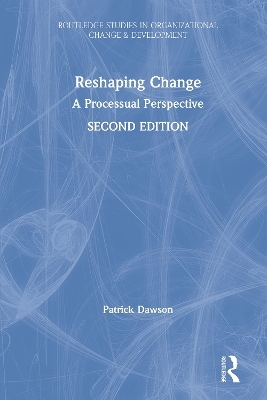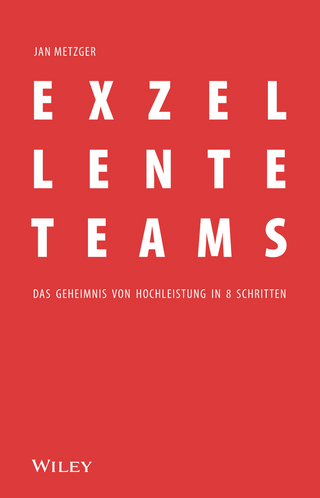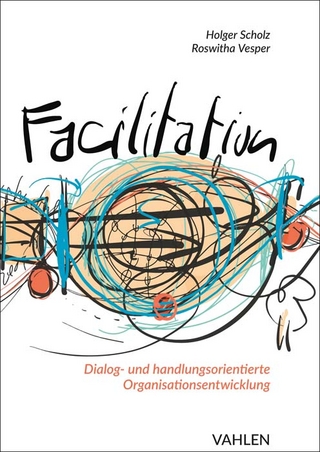
Reshaping Change
Routledge (Verlag)
978-1-138-57468-7 (ISBN)
This book views change as an ongoing process that should not be solidified or treated as a series of linear events. In drawing on data collected from over 40 years of research, it highlights the theoretical and practical value of using a processual perspective. Illustrative examples from a range of organizations including: Micro-X, General Motors, Pirelli Cables, BHP Billiton, Royal Dutch Shell, British Rail, British Aerospace, Hewlett Packard, Laubman and Pank and the CSIRO make the approach understandable and accessible to both researchers and practitioners.
In a theoretical exploration of temporal context, sociomaterial relations and power-political processes the dynamics of changing organizations is brought to the fore and the implication for reshaping change examined. On the practice of engaging in longitudinal research, study design, data collection and processual analysis, as well as the write-up and dissemination of findings, are all considered. This is an innovative and highly practical research monograph that captures the truly complex processes of changing organizations and illustrates how these are best understood from a processual perspective.
Patrick Dawson is a Professor of Change, Creativity and Innovation at the University of Adelaide, Professor of Organizational Change at the University of Northumbria, and an Emeritus Professor of Management at the University of Aberdeen.
List of Figures and Tables
Acknowledgments
Introduction
Introduction
The case for adopting a processual approach
The temporal dynamics of changing organizations
Grounding a processual perspective in empirical research
Main aims of the book
The Development of the Processual Perspective and the Process Turn in Organization Studies
Introduction
Laying the foundations: The importance of context and process
Pettigrew’s contribution to the processual-contextualist approach
The process turn in organization studies
Empirically grounded processual research and process philosophy: Issues and challenges
Developing a typology of process research in fieldwork studies
Processes of narrative change: Stories, sensemaking and dialogue
Processes of temporal change: Time, temporality and practice
Conclusion
A Processual Framework: The Non-linear Dynamic Processes of Organizational Change
Introduction
Studying change over time: Analytical distinctions and conceptual considerations
Type of organizational change
The before, during and after of organizational change: ‘Catching reality in flight’ through conventional timeframes
The importance of multiple times and multiple temporalities
Doing processual research: Approach, commitment and methods
Digging in the field: The committed researcher
Longitudinal research designs in collecting processual data
The processual framework reappraised and developed
Temporal context
Beyond contextual boundaries
Culture and history
Sensemaking and sensegiving
Time and temporality
Stories and narratives for understanding change
Power-political processes
Sociomaterial relations
Assemblages and entanglement: Some early debates
The concept of sociomateriality reappraised
Conclusion
Miners’ Stories and the Power-Political Processes of Contested Change
Introduction
The power of stories, storytellers and storying
The power-political process of contested change at Glenrothes colliery
Stories and the storying process in changing organizations
Retrospective stories and prospective storying
Temporal sensemaking and change: It’s ‘us’ against ‘them’
Attribution of blame in making sense of performance
Review and appeal: The power of stories to resist and steer change
Conclusion
Temporal Context and Non-linear Change at General Motors
Introduction
Context, time and temporality in the study of changing organizations
Moving context beyond business considerations dominant in mainstream change management models
Alternative conceptions of time and the concept of temporal context
Temporal context: The illustrative example of General Motors
The historical context of General Motors Holden
Data gathering and the concern with data triangulation
Stories in temporal context: Narrative in the making and processes in the shaping
Temporal context and depth of contextual knowledge
Temporal context and the sociomaterial dynamics of cell design
Temporal context and power-political process
Conclusion
Sociomaterial Relations in the Emergence and Growth of Micro-X
Introduction
Ongoing change and sociomateriality at Micro-X
The concept of sociomateriality and the importance of time
Micro-X: A high-tech start-up company based in Adelaide
The birth of a business: From idea generation to marketing and product emergence
Finding a partner organization for distribution and sales
Securing finance and building networks
Prototypes, reliability testing and the core technology
Establishing a Micro-X facility in South Australia: From design to manufacture
Drawing on the experience of ex-Holden employees
Quality supply and manufacture
Strategy, collaboration and innovation
Conclusion: Sociomaterial relations and the Micro-X story
The Design of Longitudinal Case Study Research and the Importance of Process and Time
7. The Design of Longitudinal Case Study Research And The Importance Of Process And Time
Introduction
Time and temporality in processual research and the ethnographic case study
Process ontology and debates on temporality and change
Temporal practices and temporal awareness in researching workplace change
A facilitating framework for accommodating time and temporality in extended case study research
The design and practice of longitudinal research
Longitudinal design and processual research: Practical constraints and contextual opportunities
Conclusion
Conducting Processual Fieldwork: Data Collection and Analysis
Introduction
Tacit knowledge: There is no substitute for dirty hands
Doing it: Processual research and the task of data collection
Observational methods
The use of interviews
Combining observation and in-depth interviewing
Other data collection techniques and supplementary methods
Processual analysis: The long vigil
The essential needs of processual analysis
The need for contextual richness in accommodating conflicting data
Conclusion
Disseminating Processual Research: Audience and Storyteller
Introduction
Stories and storytelling
The anecdotal story as a recipe for success: The popular management literature
Stories and storytelling in academic study
The processual case study in written form
The question of higher levels of output and the constraints of research group pressures
The case study and the audience: A typology
Content and style of the case material
The currency of publications: Challenges, opportunities and constraints
Conclusion
Conclusion
Introduction
Practical dimensions of processual research
Concluding comments on developments in the processual approach
Appendix I: Some Examples of Interview Schedules and a Supervisor’s Questionnaire
Introduction
Supervisor’s interview schedule
Yard staff interview schedule
Supervisor’s questionnaire
Appendix II: An Example of a Processual Case Study Write-up for Company Agreement on Publishable Material
Introduction
The company write-up: Total quality management at Laubman and Pank
Introduction
Research strategy and methods
Laubman and Pank
Quality management at Laubman and Pank
Senior management assessment of service excellence
Laboratory manufacturing and service excellence
Service excellence and competitive optometric practice
Conclusion: TQM in the Laubman and Pank Group
Conclusion
Appendix III: An Example of a Processual Case Study Used for Teaching Purposes
Introduction
Guidelines for case study tutorials
A recommended approach
The British Rail case study: Learning from the past?
The computerisation of freight operations control
The implementation problem
The ‘task force’ approach
Creating a culture of change
Technological change and organizational innovation
Case study questions
Conclusion
Bibliography
Index
| Erscheinungsdatum | 13.06.2019 |
|---|---|
| Reihe/Serie | Routledge Studies in Organizational Change & Development |
| Zusatzinfo | 4 Tables, black and white |
| Verlagsort | London |
| Sprache | englisch |
| Maße | 152 x 229 mm |
| Gewicht | 544 g |
| Themenwelt | Wirtschaft ► Betriebswirtschaft / Management ► Planung / Organisation |
| ISBN-10 | 1-138-57468-6 / 1138574686 |
| ISBN-13 | 978-1-138-57468-7 / 9781138574687 |
| Zustand | Neuware |
| Haben Sie eine Frage zum Produkt? |
aus dem Bereich


